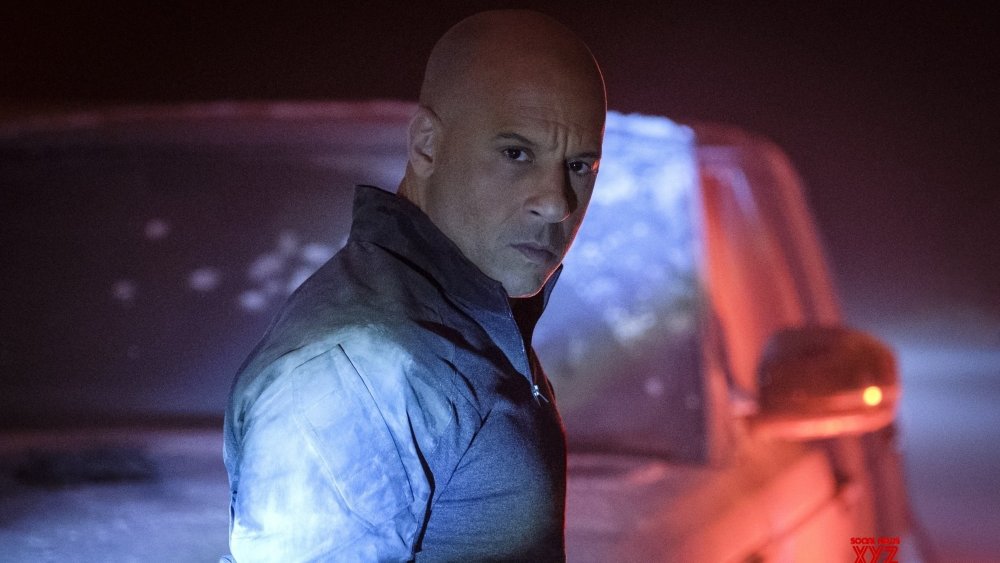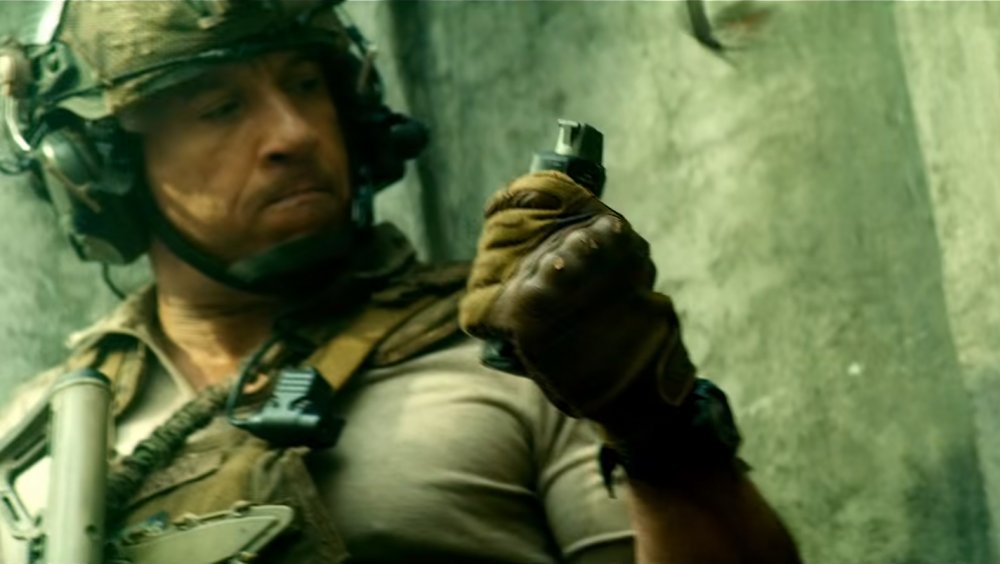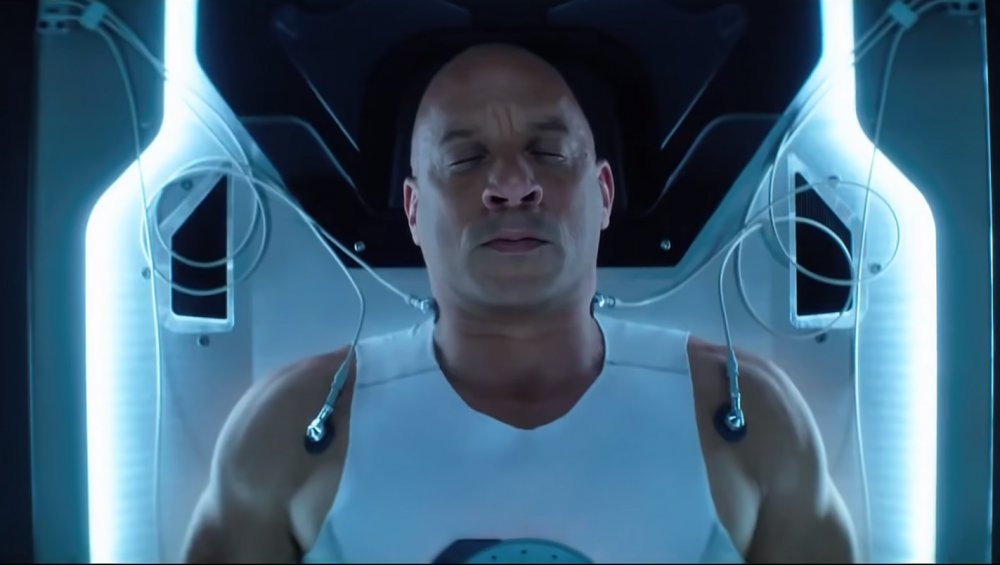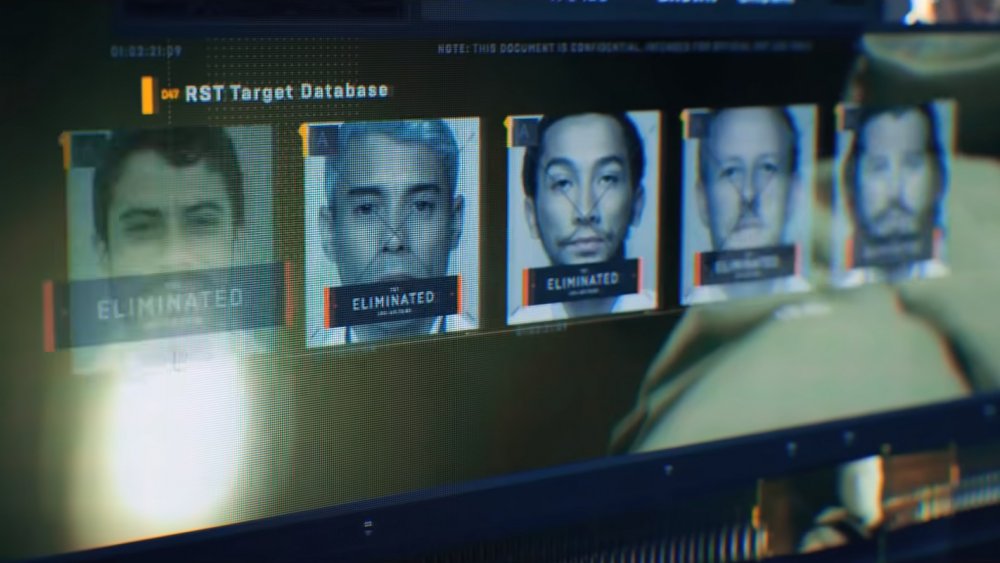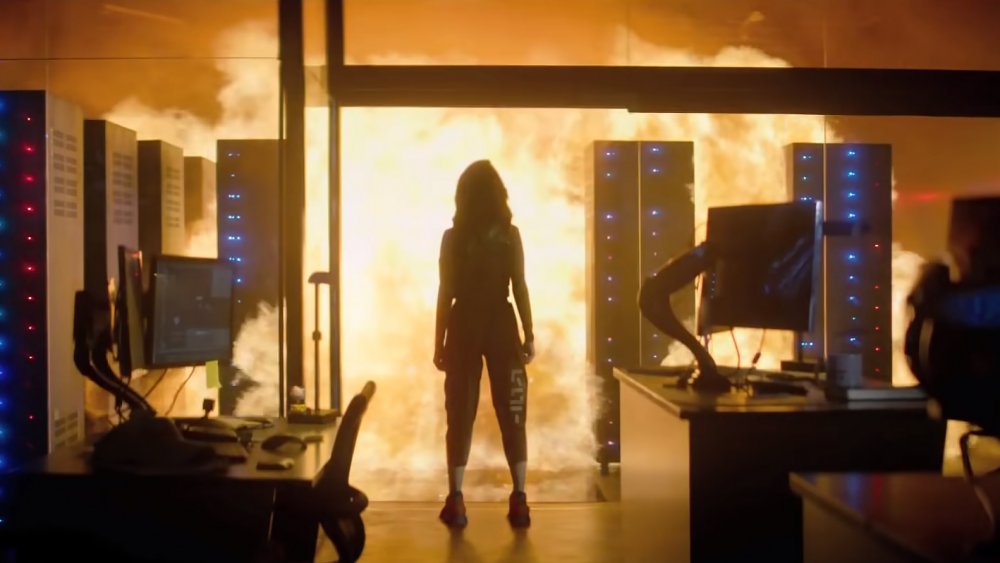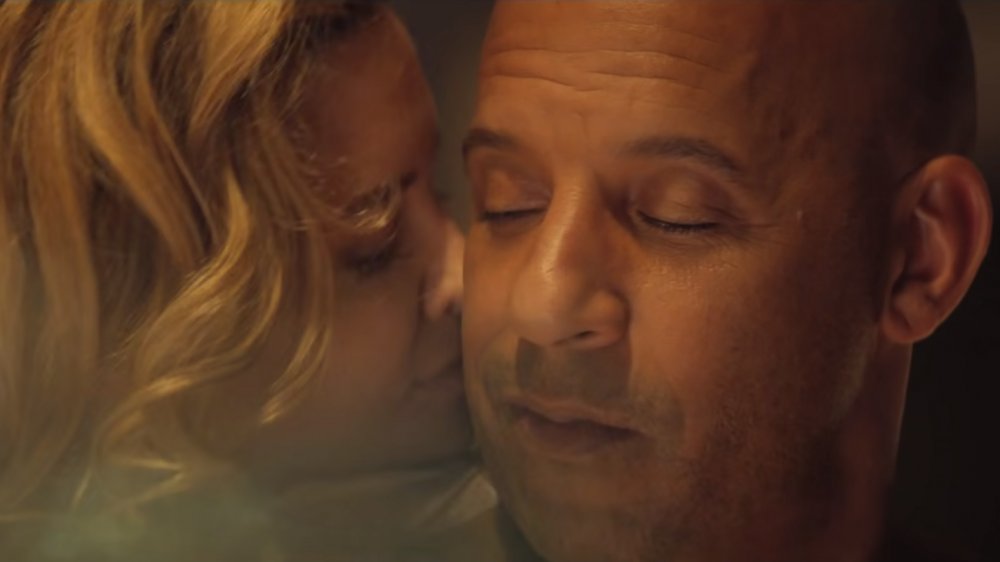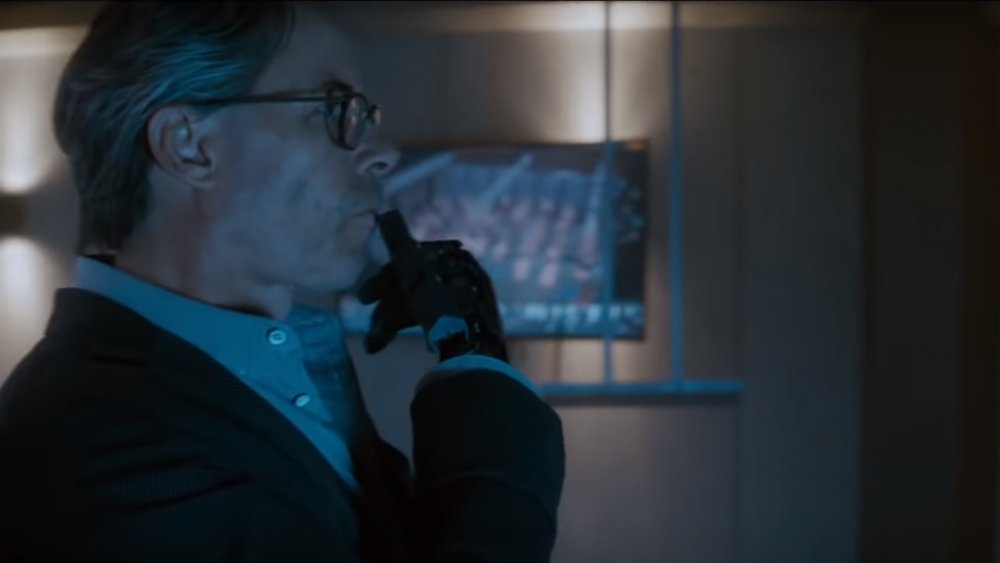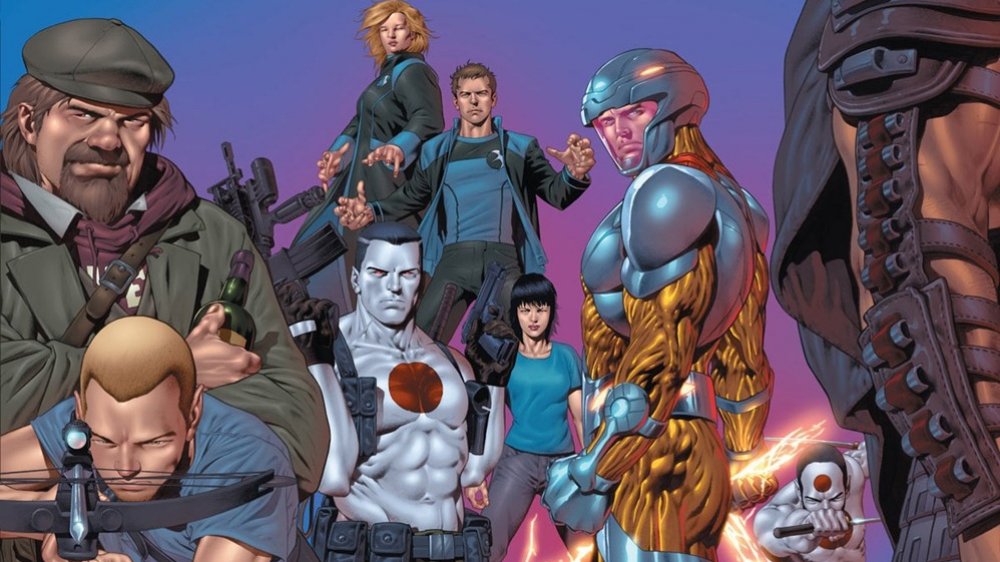Biggest Unanswered Questions In Bloodshot
Here's the thing about a movie like Bloodshot, which plays fast and loose with the truth: It's very hard to tell what's real and what's not. Sure, Bloodshot has one of the best mid-movie twists of any superhero flick, but that big reveal comes at a cost. There simply isn't enough time in Bloodshot's one-hour, 49-minute runtime to explain what's real, what's not, and how everything fits together.
These aren't just small details that are missing, either. Big portions of characters' backstories are cast into doubt and left unexplained. At least one major mystery isn't addressed. The movie ends with the possibility of an Inception-style cliffhanger (not the only Christopher Nolan movie that Bloodshot is influenced by), but doesn't offer enough clues to figure out what's going on for yourself.
Sony is probably saving some of these answers for an eventual sequel, but for now, these remain Bloodshot's biggest unresolved questions. Let's hope Bloodshot does well at the box office. We'd really, really like some of these answers.
Who was Ray before he became Bloodshot?
It's impossible to talk about Bloodshot without giving away the big twist: Nothing that Ray Garrison remembers about his past is real. His daring hostage rescue? His luxurious Italian vacation with his beautiful wife, Gina? Their murder at the hands of a crazed terrorist? All fabrications of Rising Spirit Technologies, the military contractor that's been wiping away Ray's memories and replacing them with fantasies designed to make him the ultimate weapon.
So, then, who is Ray? Bloodshot looks like it's going to tell us when Ray tracks down the real-life and very much still alive Gina, but doesn't actually give us any answers. From what Gina says, we can infer that Ray really was a member of the military, and really did go on highly classified missions. His name actually is Ray. He dated Gina, but their relationship ended five years before the movie takes place. That's all we really know.
To be fair, this is a question that Bloodshot's comics struggle with, too — in most versions, Bloodshot is either a former mobster named Angelo Mortalli or a special operative named Ray Garrison, although there's some ambiguity around both — but given how much of the movie seems to hinge on Bloodshot's mistaken identity, it's strange that we didn't get any answers to this question at all.
Is Ray even dead, and if so, how did he die?
RST's nanites are miraculous in many ways. Not only do they give their owner superpowers, but if you believe RST founder and lead scientist Emil Harting, they also bring people back from the dead.
But is that true? As we've seen, it's hard to take Dr. Harting at his word, and Ray's death at the hands of Martin Axe — or whoever RST is pinning the murder on this week — is a fake memory. Not only is Ray's real cause of death left unexplained, but it's not even clear that he actually died in the first place.
For example, Gina is surprised to see Ray when he shows up unannounced at her door, but she's not that surprised. It's the kind of shock that comes from running into a former lover unexpectedly, not from seeing a dead ex-boyfriend suddenly risen from the grave. If Ray had passed away, you'd expect that Gina would've at least heard about it — they're not together any more, but they clearly still care about each other — unless RST covered it up. And if they did, then we're back to the original question: What happened that needed to be kept under wraps?
Why did so many people leave RST?
Bloodshot isn't actually hunting terrorists. He's tracking down and killing former RST employees, who Dr. Harting fears will spill the company's secrets to competitors. In the movie alone, Bloodshot's targets include computer genius Martin Axe, former RST executive Nick Baris, and, briefly, Wilfred Wigans, who isn't technically RST but who figured out how the Bloodshot technology works, thanks in part to some open-source code.
What we don't know, however, is why all of these people left their (presumably) high-paying jobs doing cutting-edge research in the first place. Sure, Harting is a sociopath with a god complex, which probably means he's not a great boss. Sure, turning a dead soldier into a mind-controlled slave raises some ethical issues. Without an official explanation, however, those are just possible reasons why RST suffered an exodus. We don't know for sure.
And for that matter, why did Harting let everyone go in the first place? When KT tries to defect, Harting turns off her implant, making it impossible to leave. Harting clearly isn't above using violence to keep his employees in line — why didn't he stop the problem before it started, rather than force a supersoldier to clean up his mess later?
What happens with RST now?
There won't be another Bloodshot, at least not from Rising Spirit Tech. By the end of the film, the company's servers have been blown to hell, its CEO and former executives are all dead, and its corporate headquarters are in shambles. For all intents and purposes, it's done and gone.
It also collapsed in a fairly public fashion, too. A superhero brawl doesn't happen on a busy city street without anyone noticing. There's bound to be some cellphone footage of the fight out there. In addition, RST is a major company. It has clients, including the US government. It has investors. It's probably publicly traded. There's bound to be some fallout.
In the past, this is the sort of thing that RST would've covered up. Now, though? There's nothing stopping an in-depth investigation from happening, or keeping a lid on the fact that a military contractor has created superheroes, who now walk among us. Repercussions seem inevitable, but Bloodshot doesn't offer any clues as to how they'll play out.
Who is Gina's husband (and are those kids really his)?
Gina DeCarlo is over Ray Garrison. She still cares about him, but she's no longer in love with him. Gina makes that very, very clear when Ray shows up on her doorstep, looking for answers, and she dismisses him with a simple but telling phrase: "I have a family."
That being said, Gina seems to have gotten that family awfully quickly. She broke up with Ray five years ago, but that's a very quick time to get over a major relationship, start a new one, get married, and have (at least) two children, one of whom looks like she's at least four years old. Besides that, Ray shares one long, meaningful look with Gina's daughter that implies there's a little more to this story than Gina is letting on.
That glance stands out because it's such a weird, awkward moment. And besides, why don't we see Gina's other kid, or meet her husband? Everything in the way the scene is shot seems to imply that one, if not both, of the kids are Ray's. At the same time, there's no real evidence in either the dialogue or the story to support the theory that Ray is secretly the child's father. Is this just odd editing, or is there something more going on?
How did Emil Harting really lose his arm?
Emil Harting lies about everything. He just can't stop himself. Obviously, for his scheme to work, some fibs are necessary. Ray needs to believe that his wife was murdered, and that a former RST employee pulled the trigger. However, that doesn't explain everything. When rebooting Bloodshot, it sounds like Emil changes small details in Bloodshot's origin story just for fun.
Take Harting's backstory, for example. When we first meet Harting, the not-so-good doctor says that he was a childhood tennis prodigy who then lost his arm to cancer. The second time, however, Harting decides to tell Ray he played cricket. Not only is that strange — Harting later berates KT for going off-script during the resurrection process — but it raises another question: Is any part of Harting's story true, and if not, what really happened to his arm?
In fact, if Harting is lying about his own injury, who's to say that Tibbs and Dalton's histories are any more accurate (given her role in the film, we'll give KT the benefit of the doubt)? Were they even soldiers? Not that it matters too much — they're all dead either way — but it's certainly something to think about.
Is this really the beginning of a bigger superhero universe?
Iron Man ended with a post-credits sequence teasing the Avengers. Batman v Superman: Dawn of Justice didn't even wait until the credits rolled to introduce a third hero, Wonder Woman, drop in a quick Flash cameo, and make a few nods towards Darkseid and Apokolips. In both cases, the message was clear: This might be a single movie, but it's also the start of something much, much bigger.
Bloodshot was supposed to do the same thing. When the movie was first announced, it was part of a five-film series that was going to kick off the Valiant cinematic universe build to a big, Avengers-style crossover called Harbinger Wars. But Bloodshot doesn't have a post-credits scene. Its Easter eggs are almost entirely Bloodshot related. There are no references to X-O Manowar, Archer and Armstrong, Quantum and Woody, Ninjak, or any of Valiant's other big characters.
Vin Diesel says that the Bloodshot-let Valiant Universe is still a go, but rights to Harbinger shifted from Sony to Paramount last fall, making the crossover as planned seem pretty unlikely. A Bloodshot sequel seems almost inevitable. A larger, interconnected superhero universe, though? We'll have to wait and see.
